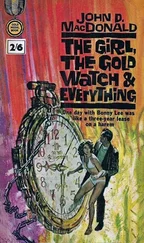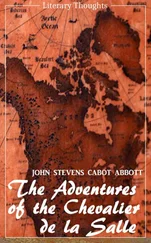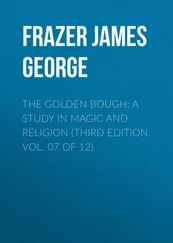1 ...8 9 10 12 13 14 ...17 But there is a telling passage in the work just quoted. It reveals what a scientist sees as an unacceptable inconsistency but a theologian sees as evidence of God’s omnipotence. Boyle had to allow: ‘Nor is this Doctrine [of Final Cause] inconsistent with the belief of any True Miracle; for it supposes the ordinary and settled course of nature to be maintained [while] the most Free and powerful Author of Nature is able, whenever he thinks fit, to Suspend, Alter, or Contradict those Laws of Motion, which He alone at first establish’d and which need his perpetual Concourse to be upheld.’ This seems to be playing both ends against the middle. If God can do anything he likes (as in causing the sun to move backwards), why has he bothered to set nature going as a system according to the strict laws he gave it? In science, the exception never proves the rule.
Final Cause is rather difficult for a scientist to come to grips with. It is rather like the soul, belonging outside the material and the natural. Science is particularly the opposite of everything supernatural; its very nature is to challenge and explain away anything that smacks of a paranormal world. At its harshest, science would deny that such realms exist; at its most charitable it would say that such things must be studied by some other logic. In any case, whatever a reader in 1800 thought of ‘purpose’ in nature and in philosophy, the cosmologists had long since reset the terms of intellectual engagement: the universe now had to be seen as moving according to precise laws; Newton had reduced the laws of cosmology so brilliantly expounded by Copernicus, Kepler and Galileo to the laws of everyday existence. The moon is held in orbit around the earth, and the earth (and moon) around the sun, by the same force that causes the apple to drop four feet from the tree. In the process, natural philosophy had produced some conflicting and dangerous new truths and consequences. On the one hand, the cosmos might have been created by God in an instant of time, remaining fixed and unchanging until he sees the need to destroy it and to redeem his people. On the other hand, the world might be imagined as coalescing out of a whirling mass of fiery atoms, now cooling. The latter world was one of continuous change rather than the traditional series of fixed points along a preordained path: Beginning, Fall, Deluge, Final Conflagration. In such a world of material causes, people had – if they dared look – a new view of free will, predestination and, perhaps more subversive than anything else, change. No wonder most societies had previously kept literacy and learning for a very few, with only the controlling seers being allowed to contemplate the eternal mysteries. For ordinary mortals (to paraphrase), a little knowledge would be an extremely dangerous thing. Once Pandora’s box was opened and a new, lesser, role ascribed to God, who could predict where matters would end?
CHAPTER THREE Problems at Home
‘There are more things in heaven and earth … than are dreamt of in your philosophy.’
Shakespeare, Hamlet , I, 5
If the Church found itself besieged by the discoveries of science, it found little support from metaphysics either, starting with Descartes, whose philosophy demanded new rigour and personal judgement in the search for proofs of what we know. In such a philosophy, mysteries like faith and revelation are unreliable guides to the truth. A very similar line was argued by John Locke (1632–1704) who, in his Essay on Human Understanding , also explored the very nature of knowledge. To what extent does reality exist outside of our perception of it? Knowledge involves the relations of ideas, but ideas do not exist outside of the mind and experience. Does the mind therefore contribute to the reality of things, or in fact remove them further from reality? In fact, Locke becomes rather confusing on the subject of matter, or substance, which in philosophical terms was recognised through its three essential properties of solidity, extension (property of occupying space) and action (motion). Bishop Berkeley (1685–1753), on the other hand, in his ‘immaterial hypothesis’, was quite emphatic on this subject: ‘No matter exists except in our perception.’ Other than our own persons, ‘all other things are not so much existences as manners of the existence of persons’. The great Dr Johnson (1709–1784), predictably enough, thought that the idea of the non-existence of matter was nonsense. ‘I refute it thus,’ he exclaimed, kicking at a stone (and giving it a distinctly Newtonian acceleration).
When John Locke taught that ‘Reason must be our last judge and guide in everything,’ he (along with continental philosophers such as Spinoza, Leibnitz and Gassendi) put his seal on the Age of Reason, and at the same time laid down a challenge. His philosophical system has no room for blind faith. ‘Faith is nothing but a firm assent of the mind: which, if it be regulated, as is our duty, cannot be afforded to anything but upon good reason … He that believes without having any reason for believing, may be in love with his own fancies; but neither seeks truth as he ought, nor pays the obedience due to his maker.’ In that case, a bishop’s (or a pope’s) say-so was definitely not a sufficient reason for believing anything. And nowhere was any philosophy more threatening than when it turned a hard-edged logic and the disciplined, unforgiving eye of reason onto the Bible itself, and particularly onto the miracles – those supernatural episodes in the life of Christ and the saints that form the very basis of Christian revelation. As Paley insisted in Evidences , for the Church the miracles are God’s way of vouchsafing to his people the authority of his purposes for them. Otherwise, God is materially unknowable; in all normal respects the Holiest of the Holy Ones is hidden from the people. The ‘breath’ and ‘hand’ of God are figurative, not literal. The special exceptions take the form of paranormal phenomena – a burning bush, or the sun standing still or moving backwards, for example. Later, he sent his Son to save the world, and the miracles of the New Testament (starting with the immaculate conception – ‘for behold a Virgin shall conceive and bear an son’ – and proceeding through the raising of Lazarus from the dead, the feeding of the five thousand, and ending with the Resurrection itself) are his way of demonstrating the Saviour’s bona fides. But throughout the eighteenth century, philosophers had secretly or openly questioned the reality of miracles, requiring that the miracles of Christ either be explained in material, scientifically understandable, terms or rejected (the raising of Lazarus, for example, looks exactly like an example of cardiopulmonary resuscitation).
One of the great joys of the Renaissance, Reformation and Enlightenment was the freedom philosophers, scholars and ordinary people acquired to think for themselves. Hence the search for proofs of the unprovable, for the qualities of the ineffable, and for facts about the unknowable. Today we take this freedom for granted, and equally cheerfully slide over some deep philosophical difficulties. Not so for the Scottish philosopher David Hume, whose own epistemology has been no less influential than that of Descartes and Locke in shaping Western thought. Much of Hume’s philosophical writings are necessarily deep and abstract, but others are set in more familiar terms and deal with readily appreciated (if still dangerous) questions.
Hume was born in Edinburgh in 1711 and had early trained for the law – a subject that appealed to him about as much as medicine at Edinburgh later attracted Charles Darwin. His passion was for a wide learning based in philosophy, starting with the classics of Cicero and Virgil. He had been a delicate young man, in large part because of his intense studying and, evidently, hypochondria. To help recover from a depression or mental breakdown, he travelled to France, living as frugally as possible, and eventually spent two years at La Fleche in Anjou where he had access to the library of the Jesuit college. It was here that he wrote his monumental work, A Treatise of Human Nature (published between 1739 and 1740). At the college, the same institution where Descartes had studied, he heard a Jesuit teacher explaining a recent ‘miracle’ and immediately wrote out a rebuttal of the whole concept. For Hume, the miracles reported in the New Testament were ‘a contest of opposites … that is to say, a question whether it be more impossible that the miracle be true, or the testimony real’. For its day, that was almost as heretical as the present-day argument that some, if not all, of the miracles are mere fictions, constructed as a mythology around which to unite the fledgling first-century Christian Church.
Читать дальше












